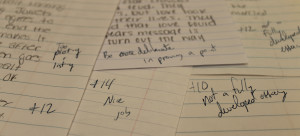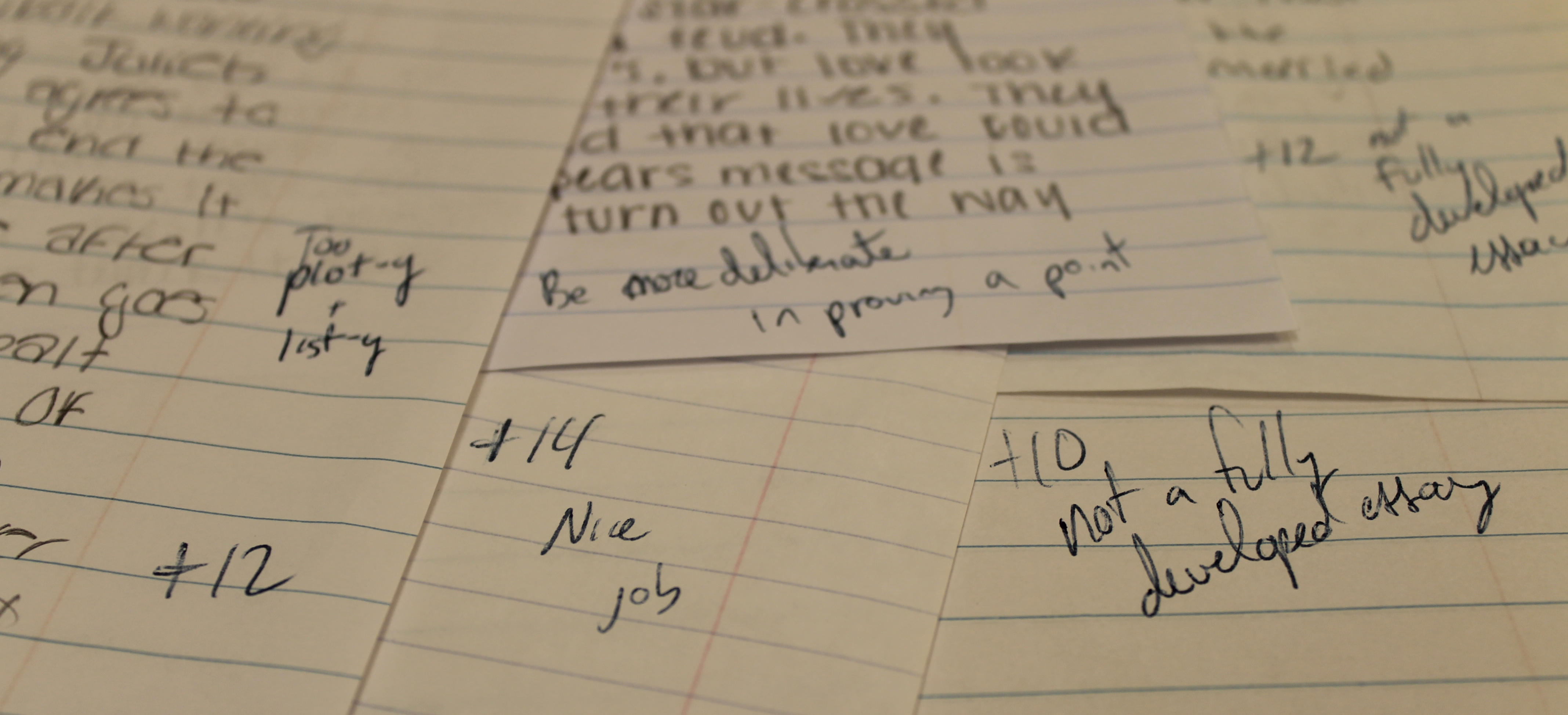In schools, teachers sit quietly in fluorescently lit rooms, grasp a pen, and begin a tedious task that educators are required to do: grading. Repetitively evaluating different answers to questions is part of the job. Multiple choice tests and quizzes keep answers to a minimum, keeping error out of grading. But there are always grades that require more than just circling A, B or C. Essays, performances, projects, and short stories are assignments that have broader points that need to be assessed. When teachers have to grade students on their writings and performance instead of their circled answers, it opens the door for subjectivity to creep in.

Teachers commonly grade students with the rubric system, a scoring guide that assesses a student’s quality of work. Using this system helps teachers stick to certain criteria, keeping subjectivity from affecting student grades. In ways, the rubric system improves the way educators evaluate. Using rubrics help teachers like Creative Writing and English teacher Kathleen Greenlee in assessing students equally.
“I generally try to stick to a point system so that I can be objective,” Greenlee said. “You have to be really strong about keeping personal bias out of it and try to stick to the guidelines of the assignments.”
History teacher Melissa Hayden said she only grades students objectively.
“The only way I grade students is by basing it off of AP rubrics. I don’t even look at student’s names because there’s content.”
Rubrics offer an ideal way of grading that focuses on specific points to make grading more specific and objective. Though it is used to make grading more easy and narrow, sophomore Sandra Schaedler was not pleased with the grading requirements her English teacher assigned.
“I feel like they can have a format, but there are tiny little things they want in [our grades]. Sometimes that takes away from [student] learning and writing because they want it so specific. I have a teacher where I have to go show her [my work], have her read it over, and have her tell me what I needed to fix on it. That was the only way I could get a good grade on that paper, which I thought was ridiculous.”
Eliminating subjective grading with score guides makes grading reliant on set points. Guitar teacher and band director Matthew Cox said he would get rid of score guides.
“I wish, in a perfect world, I didn’t have to give out grades for band so that I could make it more subjective. So that I could make it where my opinion counted just as much or more than the rubric. Now the rubric has its place. It gives great feedback and helps nail down specific things that you can do. But what the rubric doesn’t do is look at the big picture. A person can score really well in several categories, then absolutely fail in one category and somehow still get an A. But if we were to just listen to it and just grade it subjectively, it did so bad on this one [category that] it really would have came down to a C.”
Cox said subjective grading is as necessary as objective grading.
“I would say that [subjective grading] is essential if you were thinking about big picture things. I wish that in class I didn’t have to give number grades and all we had to do was listen to each other. I could give feedback. Other kids could give feedback and that would be enough assessment. People would get better. We learn things as we went and just explored together. But I’m forced to give number grades, so I have to objectively grade using a rubric or some other sort of instrument.”
Rubrics and grading systems judge each student the same way to keep bias and opinions out of the picture. Evaluating every student at the same level does not show each individual student’s potential or learning.
Greenlee keeps in mind how each student is different from one another and have different learning levels and paces.
“You always keep in mind an individual student’s level of capability in relation to an assignment; and sometimes you have to look at that differently depending on the student that you’re grading.”
– By Elizabeth Her



